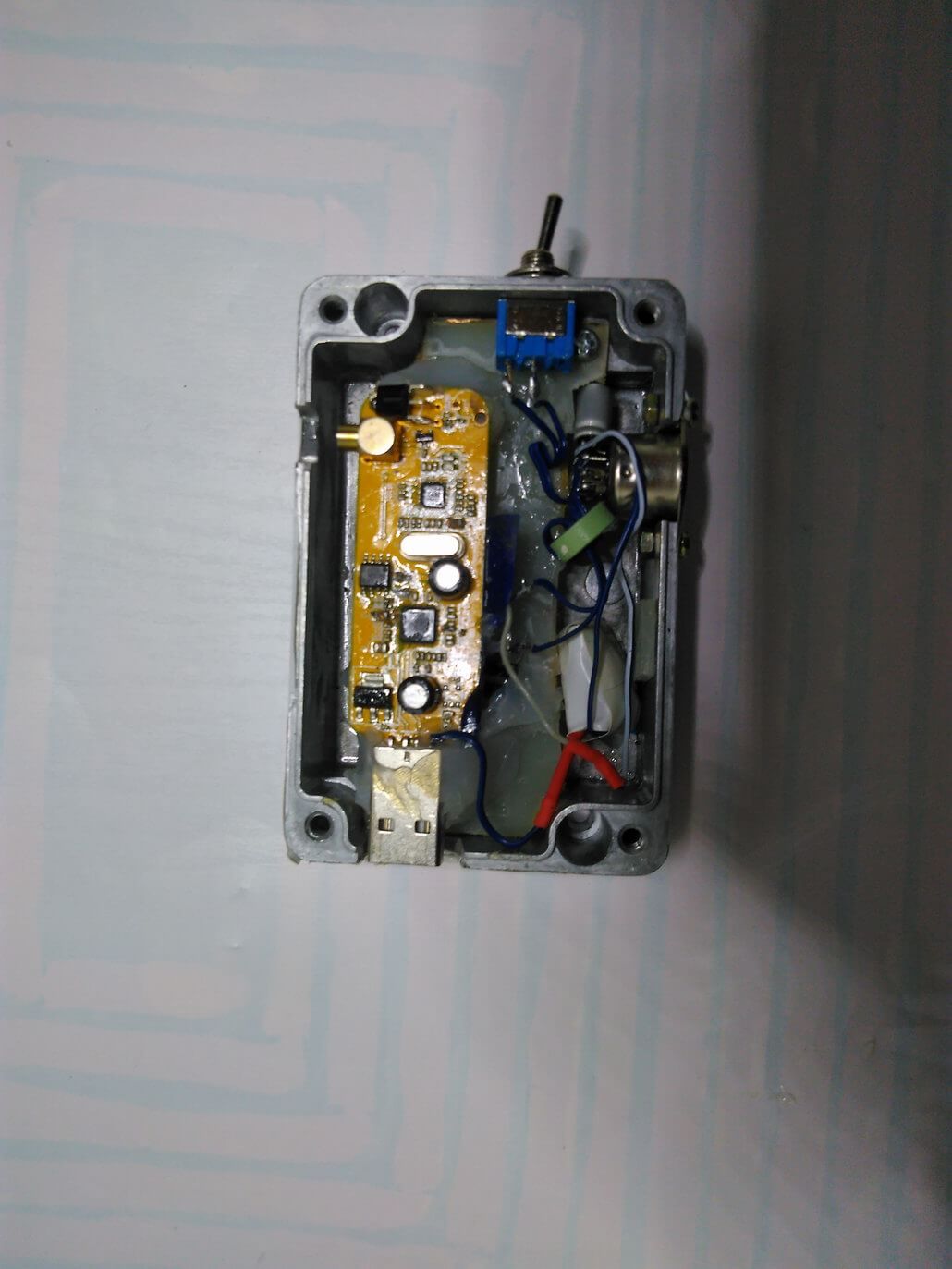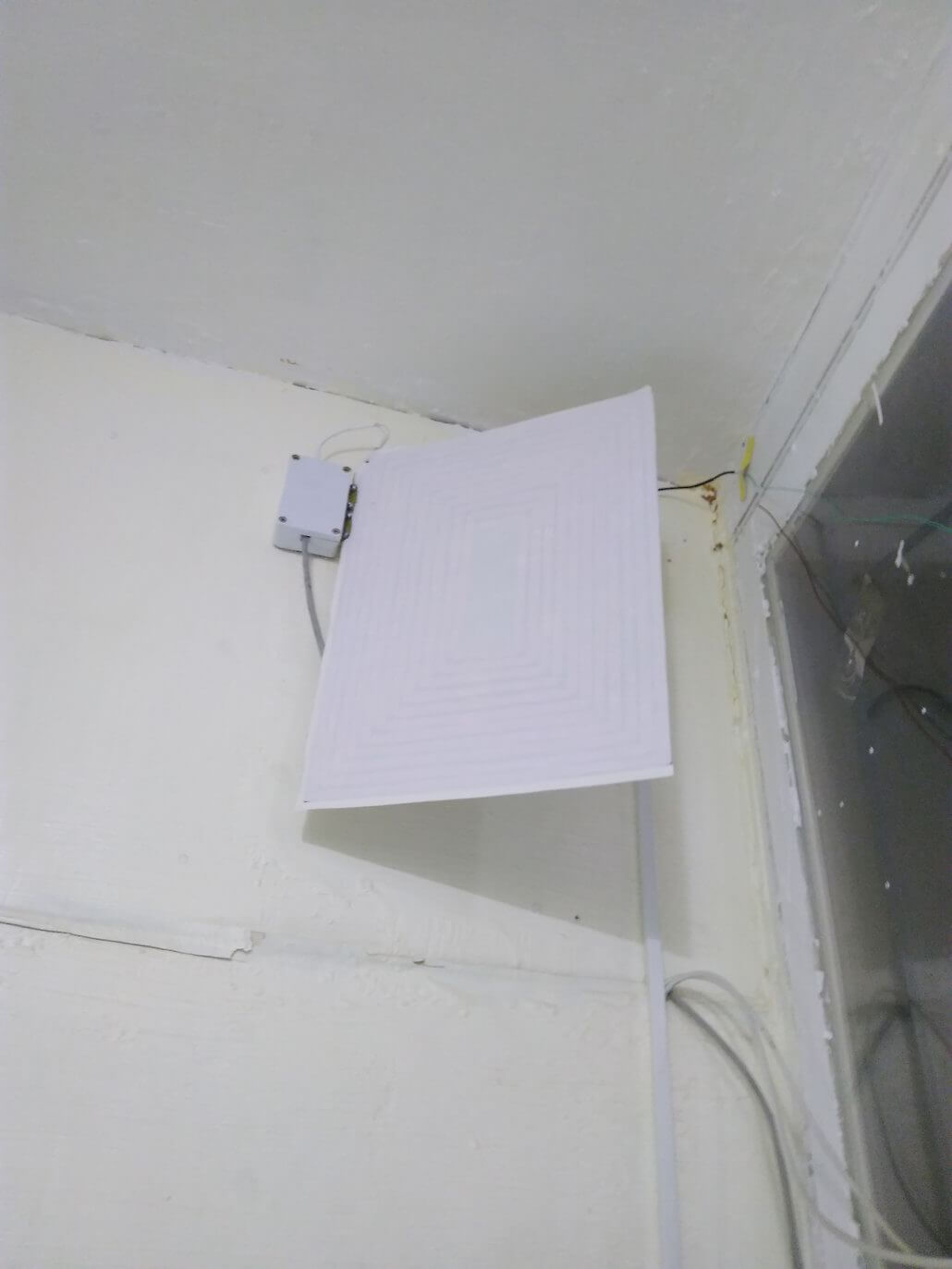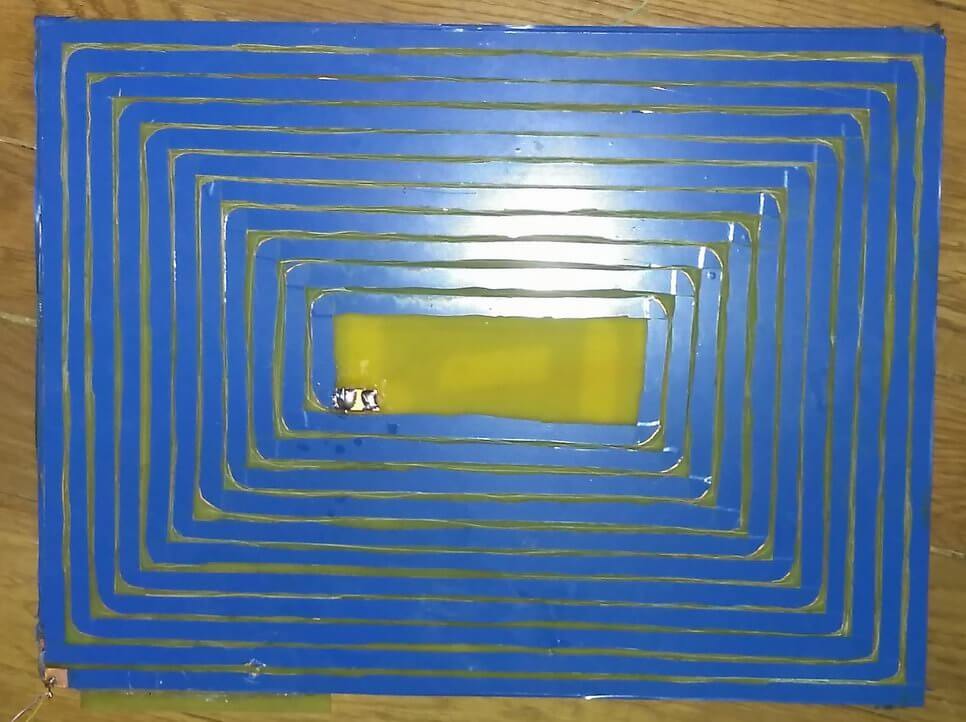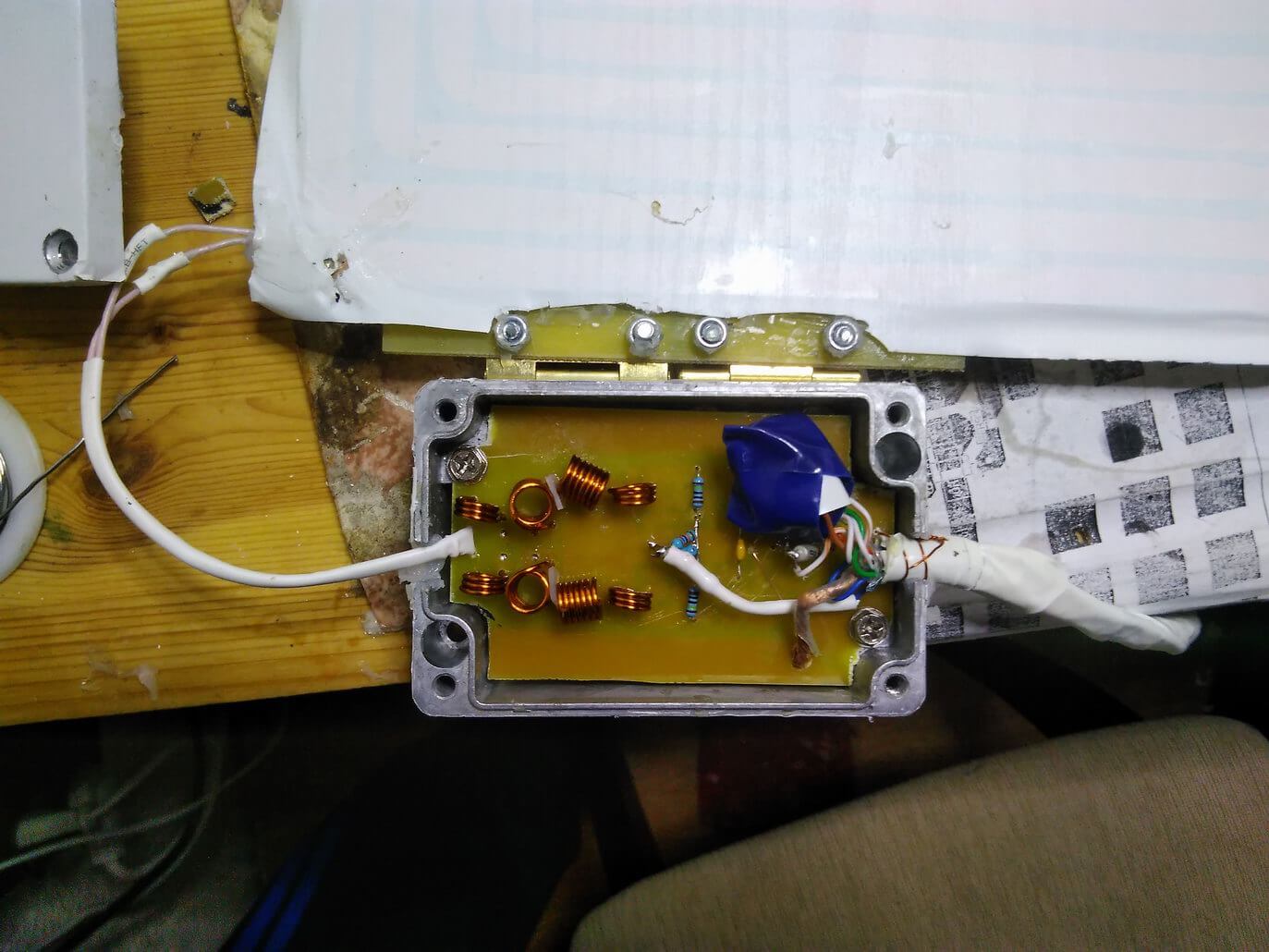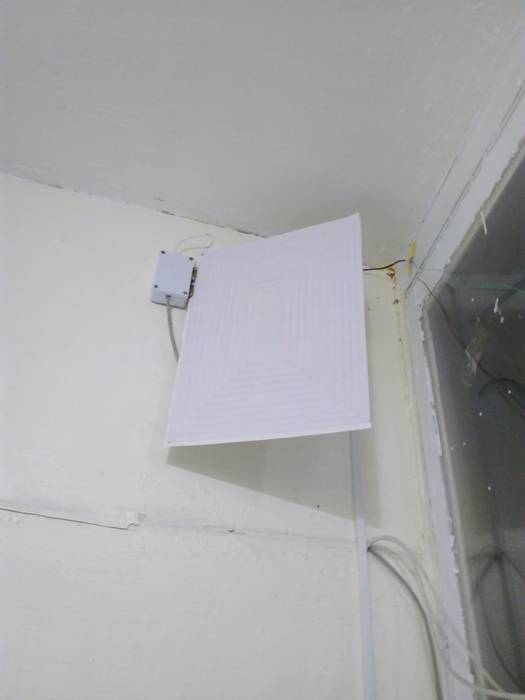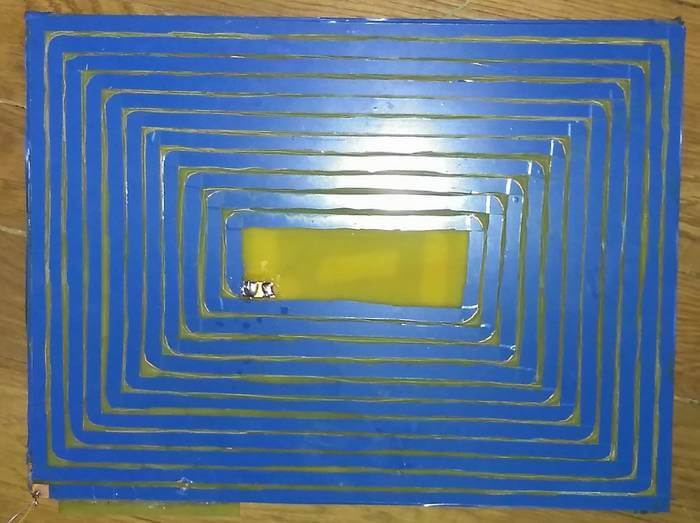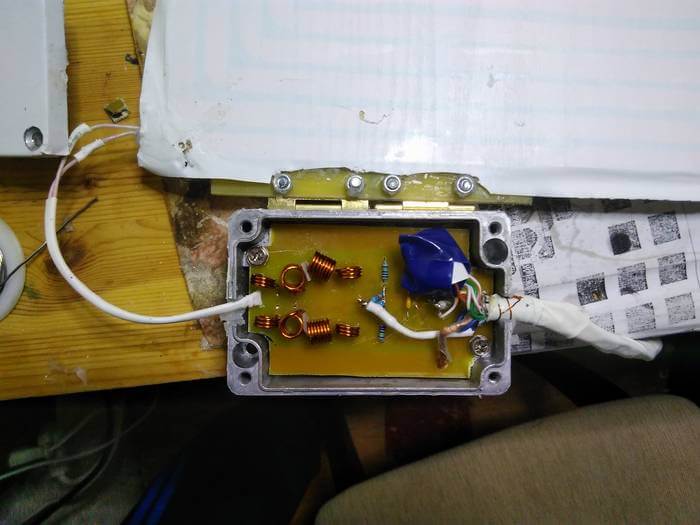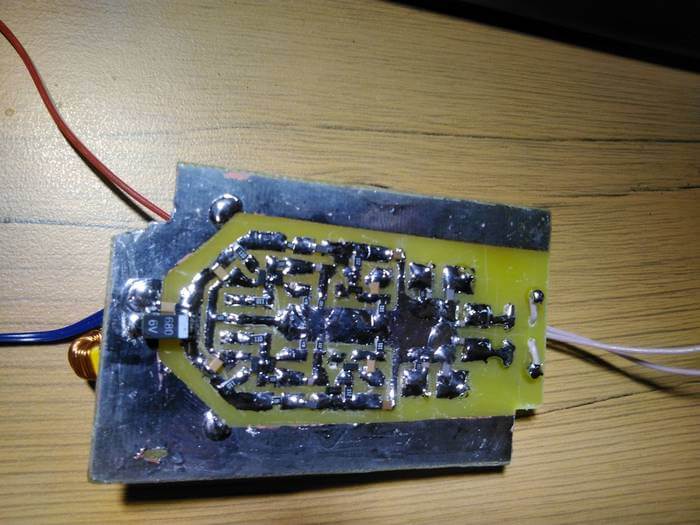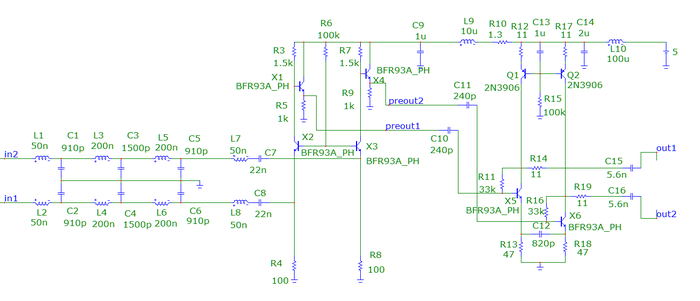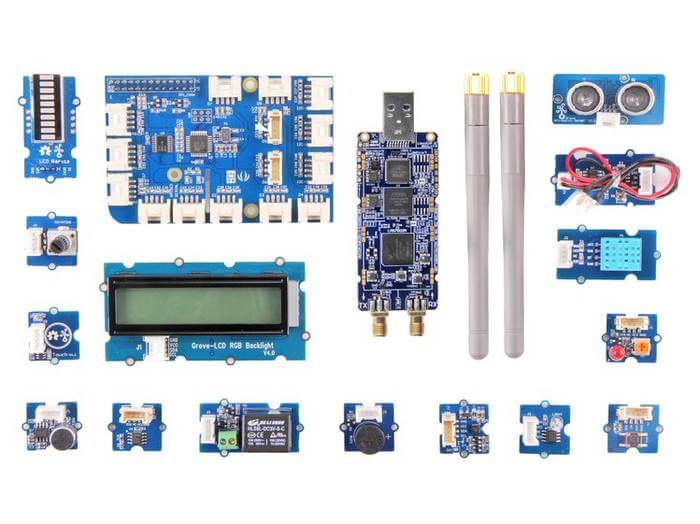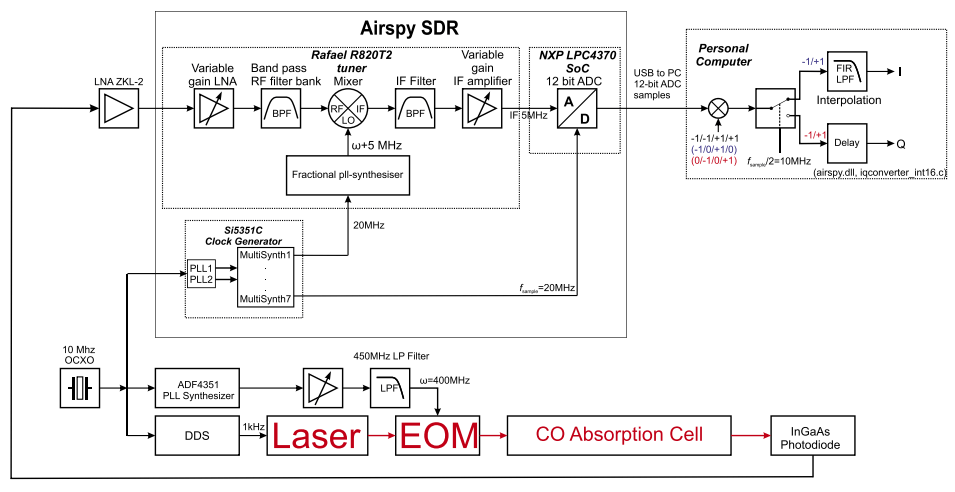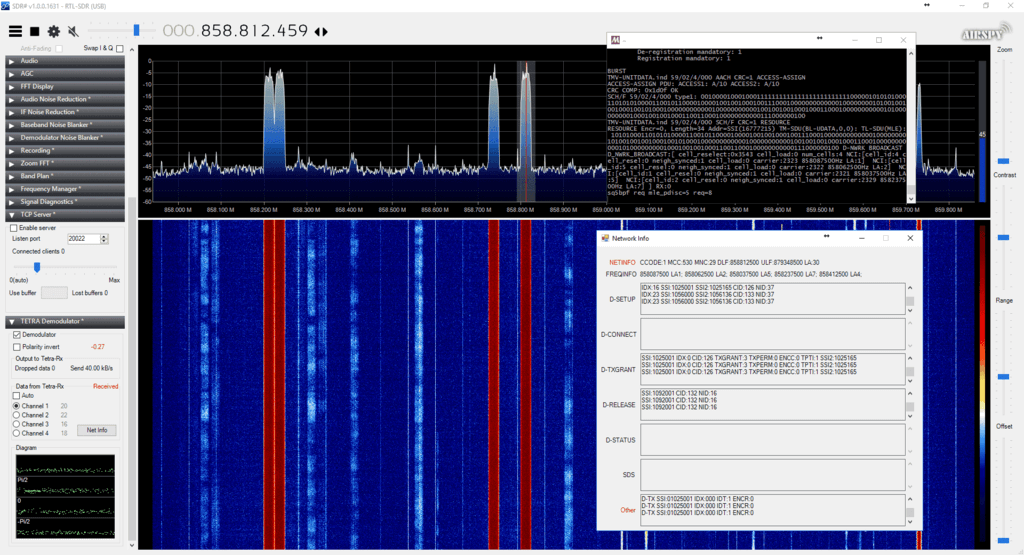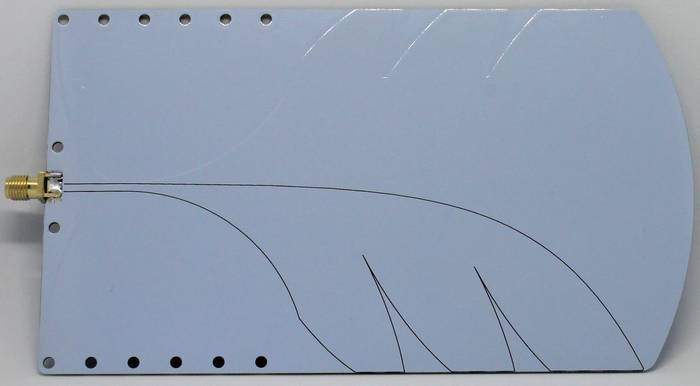A Homemade Magnetic Loop Antenna used with RTL-SDR Direct Sampling
Over on our forums user "SandB" has submitted his designs for a homemade magnetic loop antenna with preamp that he uses together with his RTL-SDR in direct sampling mode. The antenna looks like an interesting build so we are resharing it here. He writes:
So, antenna itself represents as handmade on-PCB winding made of two-side-foiled fiberglass size of 30x40 cm. Both 'windings' connected in the middle and thus winded to 'continue' each other.
Preamp located in metal box attached to antenna and connected via 1.5m S/FTP cable to another box with RTL stick. Note that some transistors soldered on PCB in upside-down - dot on layout means base.
Electrically preamp made as 3-stages balanced signal amplifier with low-input impedance and low-pass filter before input with cut-off at 15MHz. Such complications were required to reduce interferences and intermodulations. Antenna itself is more effective on long-medium waves, so preamp has higher gain on short waves (gain varies from 45db at 200KHz to 68 db at 10MHz - see attached freq responce pic). Getting more flat responce at lower frequencies is possible by increasing C10/C11/C12 to 22nF.
My implementation has some additional elements to make possible to adjust preamp's gain in few db's. But seems its quite useless so that details not included in this post. Anyway, its possible to reduce gain by increasing R6 to 500K.
Box with RTL SDR: I put both signal wires as 3 windings via ferrite ring with high permeability just before RTL chip. This noticeable reduced stray interference, that induced in that cable but doesn't affect differential signal.

